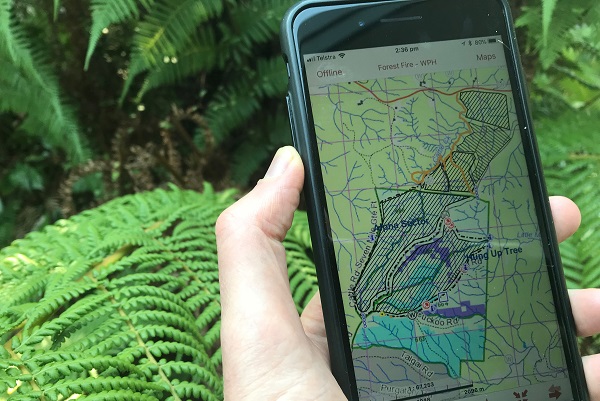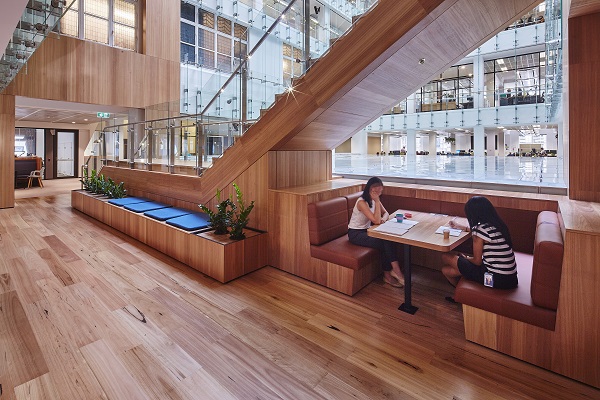
The planning process
Step through the process of planning a native forestry operation.
Native forestry operations take place in 1% of the forests we manage each year and the same State forests have been harvested and regrown for more than 100 years.

Step through the process of planning a native forestry operation.

How we search for, protect and monitor wildlife.

About our partnerships with local Aboriginal communities.

Access our Plan Portal and find harvest plans for our native forestry operations.

Current operations under the Coastal Integrated Forestry Operations Approval.

How we manage compliance and our compliance and complaints registers.
The Regional Forest Agreements set aside a comprehensive, adequate and representative reserve system across NSW, and identified the areas of State forest that are available to be continually harvested for timber and regrown.
About one per cent of State forests are harvested and regrown each year and these are always regrowth forests that have been harvested in the past and regrown.
We plan across decades, across the landscape and at each site to ensure forestry operations are managed sustainably today and for the future.Take a detailed look through the native forestry planning process.
Before we harvest a single tree, we spend many months preparing a harvest plan for each operation in line with the rules set out in the Integrated Forestry Operations Approvals (IFOAs).
We regrow every harvested area, so we also carefully plan to promote the best conditions for regeneration, depending on the forest type. In some forests this may mean areas of canopy will be opened up to allow light-hungry seedlings to regrow.
Areas including mapped old growth, mapped rainforest, wetlands and riparian zones, threatened ecological communities, ridge and headwater habitat and rocky outcrops are permanently protected.
On average, 40% of each native forest harvest area is set aside for protection.
The environmental conditions in the IFOAs were developed by expert scientific panels to protect habitat and wildlife across the landscape.
As part of the planning process, we have a team of ecologists who complete surveys and access records collected by others from the NSW BioNet Atlas.
We complete broad area habitat searches immediately prior to every native forest harvesting operation to identify threatened flora and fauna species and ensure suitable habitat is set aside within each harvest area.
On average, 40% of every harvest area is protected. We protect feed and habitat trees for birds and arboreal mammals, retain mature trees to provide a high-quality seed source for regeneration, providing long-term wildlife habitat and ensuring a sustainable timber resource for the future.
We also have ongoing monitoring programs across the State. More information about protecting wildlife.
Our dedicated team of Aboriginal Partnerships Liaisons work closely with local Aboriginal communities to carry out cultural heritage surveys ahead of operations. For more detail, see our Operational Guidelines for Aboriginal Cultural Heritage Management - a Due Diligence Code of Practice.
Information about cultural sites belongs to Aboriginal communities and is confidential, so while protections are mapped and applied, cultural heritage information is not visible in harvest plans.
We also engage with neighbours, forest users and other stakeholders while planning operations. More about stakeholder engagement.
Forestry operations are active worksites, with heavy machinery and hazards that can cause serious injury. Safety is paramount and worksites are closed to the public. Closures are listed on our website as well as on signs in the forest. Please pay attention to these closures and do not put yourself or our staff or contractors at risk by entering an active worksite.
We manage erosion in all forestry operations, with the measures put in place to protect waterways developed by expert scientific panels following extensive research. Research published by the University of New England has demonstrated that the best practice measures used by Forestry Corporation to protect water quality during our operations are effective. This reinforces more than four decades of monitoring data that has consistently demonstrated the water from State forests is among the best in the landscape.
Timber is the most renewable building product available. It is the only major building product that stores carbon for the life of the products harvested and has a lower carbon footprint than alternatives such as concrete or steel. The Intergovernmental Panel on Climate Change recognises that sustainably managed production forests that maintain carbon in growing trees while producing an annual yield of timber deliver a large, sustained climate change mitigation benefit. In Australia, carbon credits are not available for stopping sustainable timber harvesting because research has demonstrated that this is likely to lead to perverse environmental outcomes. This is because carbon calculations must take into account the impact of sourcing timber and wood products from elsewhere or of using alternative, more carbon intensive, products such as concrete and steel.
Find out more about carbon in State forests and visit the Department of Primary Industries website for details about carbon research.
Forestry Corporation has been appointed to manage tourism and recreation, roads, pests and weeds, conservation and fire across two million hectares of public land on behalf of the NSW Government. These land management responsibilities incur significant costs, as they would for any land manager.
Forestry Corporation receives an annual Community Services Obligation grant, which is a fee-for-service that covers some of the cost of providing community facilities such as free visitor areas, community roads, management of one million hectares that are permanently set aside for conservation and other services that a private commercial forest manager would not deliver.
This grant does not cover the cost of land management and revenue from timber production operations is used to supplement this and ensure the forests are well managed for the public of NSW. Traditionally this grant has been more than offset by the annual dividend paid back to the NSW Government.
Following the 2019-20 fires, Forestry Corporation has invested many millions of dollars in recovery works such as rebuilding community roads and bridges and making forests safe and has reduced timber production in regions impacted by fires in response to environmental considerations.
Timber operations have also faced significant disruptions due to increased protest activity, legal challenges and changes in regulations. These actions have caused disruptions to timber operations increasing costs and decreasing timber revenue.
As well as delivering income that offsets the cost of managing land on behalf of the community, forestry operations provide substantial economic benefit by supplying dozens of local mills and businesses that harvest and process forest products and employ local community members. In NSW, more than 40 per cent of the 22,000 forest industry jobs are in regional areas. NSW has the most hardwood sawmills in Australia, which largely rely on native forests.
Read more about the 2023/24 Annual Report here.

Our forestry activities are independently regulated and operations are regularly audited.

Our certification to the Australian Standard for Sustainable Forest Management - Responsible Wood.

Hardwood is processed into a wide variety of products. About our customers and timber products.